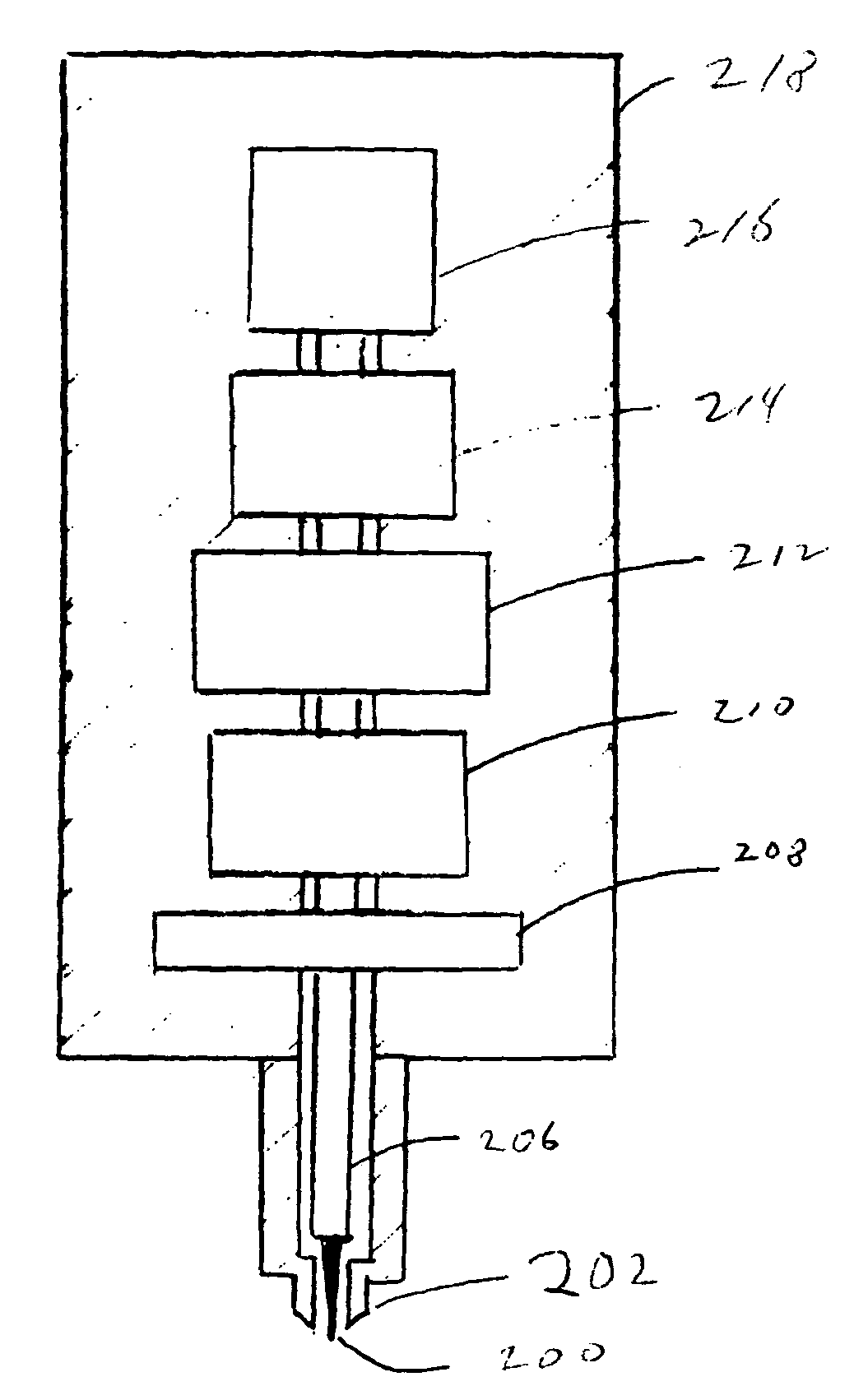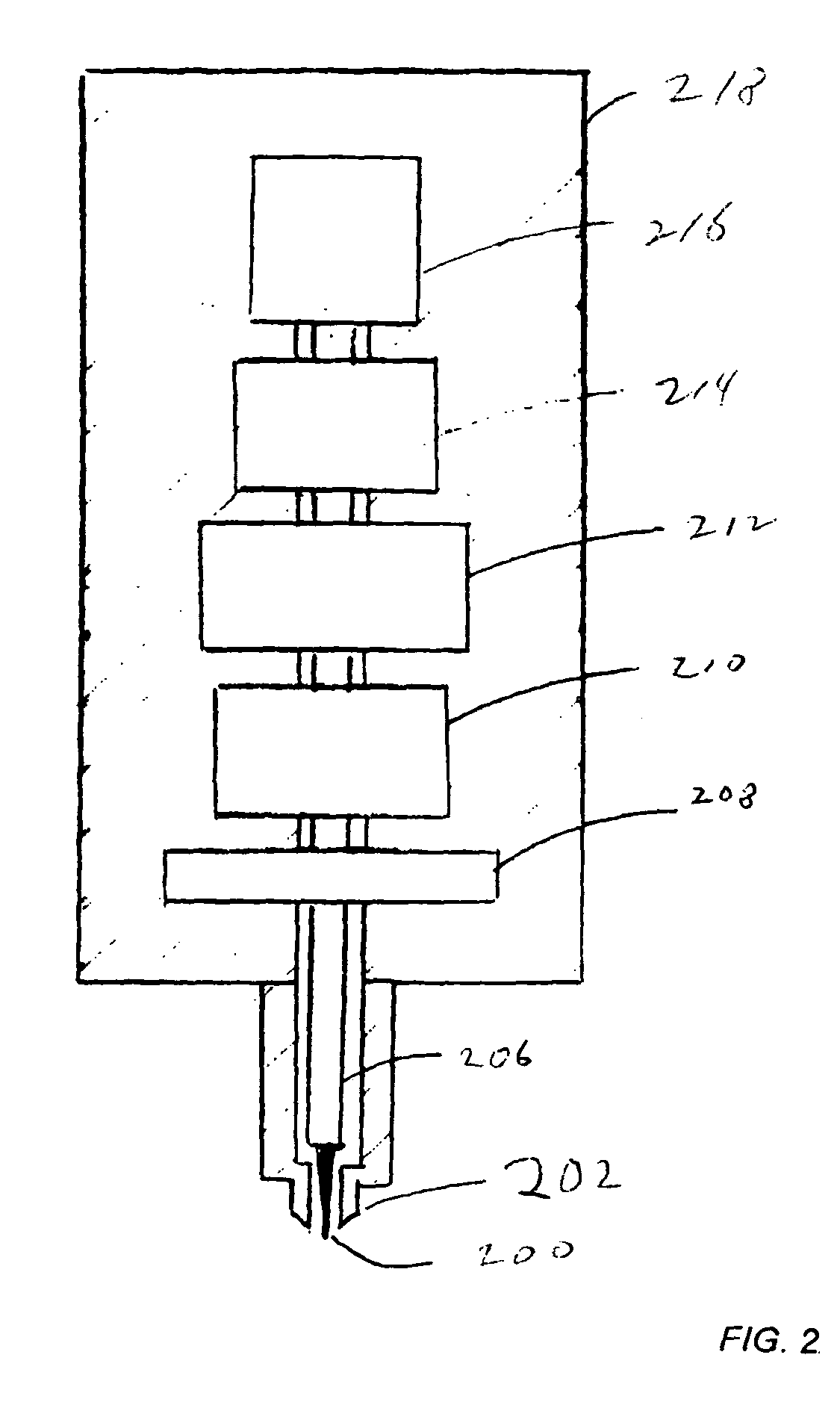Methods and instruments for assessing bone fracture risk
a technology of bone fracture risk and measurement method, which is applied in the direction of instruments, applications, person identification, etc., can solve the problems of ineffective assessing fracture risk, substantial deterioration of these properties, and general belief in incomplete measurement of fracture resistance, and conventional measures of bone fracture risk have been found to be ineffectiv
- Summary
- Abstract
- Description
- Claims
- Application Information
AI Technical Summary
Benefits of technology
Problems solved by technology
Method used
Image
Examples
embodiment
Preferred Embodiment
[0076]The essential feature of the invention is a test probe, which is inserted through the periosteum and through any overlying skin or other soft tissue to contact a bone surface. Referring to FIGS. 1a-c, the design concept for the diagnostic Instrument of this invention is that a probe assembly, consisting of a test probe 100 and a reference probe 102 is inserted through the periosteum of a bone and any overlying skin or other soft tissue of a living person, animal or cadaver so that it comes to rest on the surface of the bone. Three stages for an exemplary assembly of test probe 100 and reference probe 102 are shown in FIGS. 1a-c. The test probe is inserted into the bone to measure material properties. With a sharpened test probe (for example, sharpened to half angles of order 11 degrees) it is possible to measure post-yield properties and detect irreversible changes in force vs. distance curves. The force vs. distance curves can be processed to give paramete...
example 1
[0087]FIGS. 4a-e show that the diagnostic instrument of this invention can discriminate between baked bovine bone and unbaked, control, bovine bone. This model system of baked vs. unbaked bone is very useful because baking is an easy way to degrade its fracture resistance. Differences in fracture properties become dramatic for bone baked at 250 degrees C. for 2.5 hours [4,49]. The bones are held in a small machinist's vices in a glass bowl that is resting on a simple spring scale on a lab jack. The lab jack is used to raise the scale, bowl, vice and bone until the bone contacts the probe assembly of the diagnostic instrument. The applied preloading force with which the reference probe contacts the bone can be set by continued raising of the lab jack until the desired force is read on the scale. This applied force will set the maximum force that can be used during the testing cycles. If the applied force is exceeded, the reference probe will lift off the bone.
[0088]The unbaked, contr...
example 2
[0089]FIGS. 5a and b demonstrate that the diagnostic instrument can discriminate between the bone material properties of two individual humans that could be expected, based on previous investigations [1,4,50,51] to have different fracture properties because one is young, 19 years old, and one is elderly, 59 years old. The bone of the younger individual shows increased recovery upon retraction of the probe and requires more force to penetrate repeatedly to the same depth. Further, the maximum penetration distance that results from each cycle reaches a limit for the bone from the younger individual, while the maximum penetration distance continues to increase for the bone from the older individual even though the bone from the younger individual is cycled to a larger fixed force (7 vs. 5.5 Newton). This suggests that the bone from the older individual is less able to resist damage accumulation. Damage accumulation in the form of microcracks has been associated with increased fracture ...
PUM
| Property | Measurement | Unit |
|---|---|---|
| lengths | aaaaa | aaaaa |
| volume | aaaaa | aaaaa |
| diameters | aaaaa | aaaaa |
Abstract
Description
Claims
Application Information
 Login to View More
Login to View More - R&D
- Intellectual Property
- Life Sciences
- Materials
- Tech Scout
- Unparalleled Data Quality
- Higher Quality Content
- 60% Fewer Hallucinations
Browse by: Latest US Patents, China's latest patents, Technical Efficacy Thesaurus, Application Domain, Technology Topic, Popular Technical Reports.
© 2025 PatSnap. All rights reserved.Legal|Privacy policy|Modern Slavery Act Transparency Statement|Sitemap|About US| Contact US: help@patsnap.com



